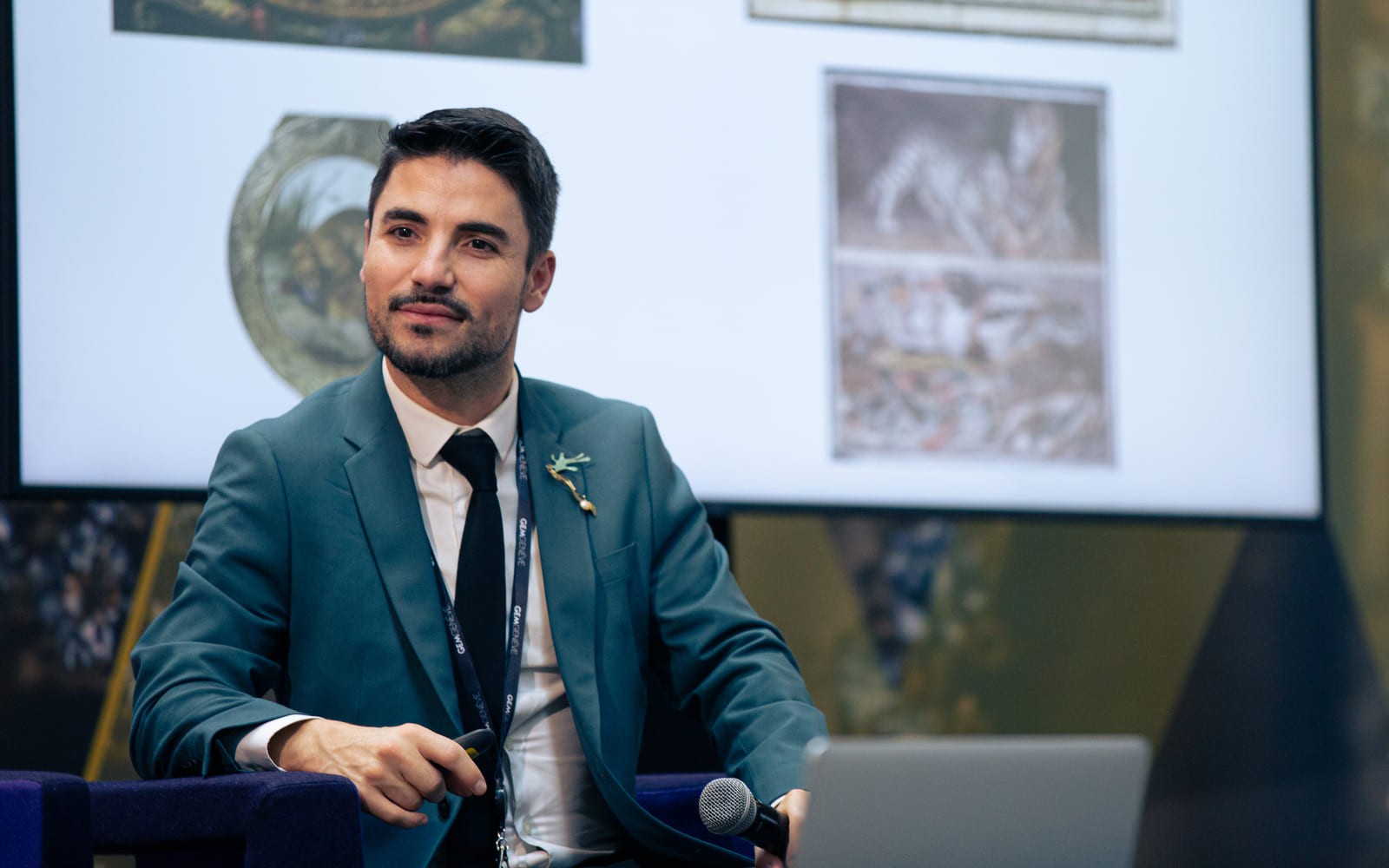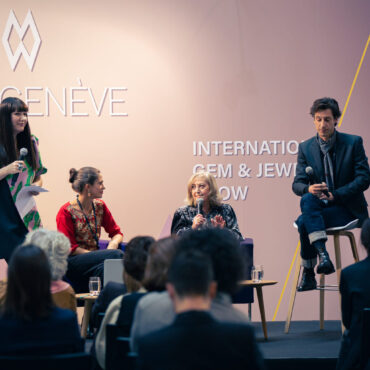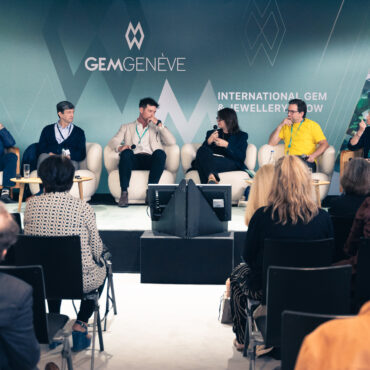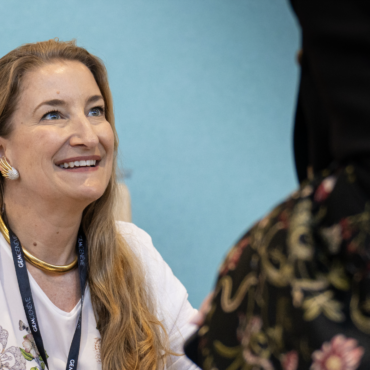Speaker: Gislain Aucremanne
Introduction
This article is about Tutankhamun and the legacy he had in the history of jewellery. Howard Carter discovered the tomb in 1922. Since that moment, this discovery started a revolution in Egyptology, and in the interest called Egyptomania, the passion for Egypt. The notion of Egyptomania leads to understanding and deciphering the hieroglyphic language of Tutankhamun’s jewels and how these treasures influenced the creation of the 20th and even the early 21st century.
Why did this historic discovery have such a significant impact on the world of jewellery? The answer can be given through four main chapters.
The first chapter will give a general context of the discovery of King Tut’s tomb, of who he was in history and how a great moment it was for Howard Carter, the archaeologist who made the discovery.
The second chapter will review key pieces from the tomb’s treasure. The third chapter will be about the symbols and the meanings linked to the jewels inside the tomb, and, finally, the fourth chapter will conclude with how the Egyptian revival through the ages proves vital and meaningful today.
1 – Who was King Tutankhamun?
One century ago, the discovery of King Tut’s tomb quickly became known as the “discovery of the century”. It was the discovery of the only one intact tomb of a pharaoh who went down in history as completely forgotten.
The erasing of the figure of Tutankhamun from history appears to be intentional.
Egyptologists have evidence of this through the statues found in the tomb.
The Egyptian religious system included several gods. Among these gods there was Rah, the God of the Sun. Amun is the god of air. They became crucial God protectors of the Pharaoh in the second millennium BC. Amun is related to air and the sky. There was a statue in the tomb, but its arms and hands had been destroyed. The head of the Pharaoh was chopped out of the figure itself; the arms, and part of the names, had been destroyed to make sure all the body parts that could help the Pharaoh to survive in the afterlife, and his name, would never last forever.
This cancellation process is called “damnatio memoriae”. This process condemns the memory of the person forever, and it makes sure this person will be forgotten entirely. That was the idea, and this is what happened to King Tut. But why?
Tutankhamun was the son of Akhenaten, one of the most famous and controversial pharaohs of Ancient Egypt. He refused the traditional polytheistic religion, in particular the cult of Amun-Ra, preferring the Sun as a disc to be worshipped on its own and directly revered by the Pharaoh without using the clergy. Akhenaten transformed the religious system, alienating his priests.
When Akhenaten died, his son, the young Tutankhaten (as he was called after the new religion), nine years old, following the advice of his counsellors, reinstated the ancient polytheistic religion.
Aton then became Tutankh-Amon, related to Amon, the ancient God. But despite this, his officials decided to make sure that, as the son of the heretic king, he was cancelled from history, and everything related to the boy-king disappeared.
Following traces, Howard Carter and Lord Carnarvon decided together to make researchers.
It took Howard Carter 15 years to understand the name of Tutankhamun properly, to understand the exact location in the Kings’ Valley and try to find him. When he found the tomb in November 1922, it was such a glorious time for him because he would revolutionise the world of Egyptology.
However, King Tut’s tomb was quite small, with a chaotic pile of splendid objects. Why was that?
Let us imagine finding the treasure of Ramses II (or Ramses the Great); his tomb would have been ten times longer and probably the treasure ten times bigger compared to Tutankhamun. Howard Carter, instead of a magnificent royal shrine, found the little tomb of a little Pharaoh who ruled very shortly, with everyone around him trying to make sure no one would remember him. This is a crucial aspect of the discovery, because the treasure we have in mind is little compared to what existed. As all the royal treasures have been stolen by thieves, Tutankhamun’s treasure is a good indication of the magnificence and importance of royal funerary treasures.
All the objects found in the tomb have one element in common: gold. Howard Carter, answering Lord Carnarvon, who was asking him what he could see, famously replied while peeking at the inside of the tomb: “Gold, gold everywhere!”.
Gold was an important metal, not only because it was precious but also because it was considered a divine material. At the tomb’s entrance, Howard Carter found two blackskinned guardians with eyes painted in gold. These two guards represented the Pharaoh,
they had his features, they wore his jewels and amulets. In this instance, the gold on statues resembling the Pharaoh was used to link the man to the divinity.
Gold is diffusely used in the funerary chamber and for the coffin containing the mummy of the Pharaoh. Tutankhamun’s golden mask is today a true icon of Egyptian funerary art, and the mummy itself was covered in jewels. In addition, they found layers of necklaces made of stones or glass beads. These objects were highly fascinating for Carter, who took them off
and documented them, one by one.
The presence of the jewels was significant because they were a protection for the Pharaoh.
Because of their importance and value, today these jewels are all displayed at the Egyptian Museum, Cairo.
2 – Tutankhamun’s Treasure
The giant golden shrine was covered with engraved scenes of the young Tutankhamun and his queen, protecting him, or giving him some presents, some objects.
Among these objects, Tutankhamun’s wife, Ankhesenamun, is depicted giving the boy-king a necklace with the attribute of Hathor, the goddess who would eventually protect the young Pharaoh in the afterlife. So, every single jewel in the tomb’s decorations or on the body of the Pharaoh was chosen not by chance, but for specific meanings.
The first piece worth examining is King Tut’s golden mask, one of the most acclaimed and famous Egyptian artefacts. The mask weighs an impressive 11 kilos and is in 24k gold. This is an object of extraordinary intensity because one can appreciate the use of various tones of the metal, and the piercing power of the eyes of the Pharaoh – one feels like he is still looking at you, that in those eyes there is life.
Fascinating details in the mask offer a glimpse of how the Pharaoh was in real life. For example, one can notice that its ears are pierced, the same as in the mummy. So, the makers paid great attention to mirroring the natural aspect of Tutankhamun while working on the mask. Besides, there is a humanity in this detail: only women and children had their ears pierced in Ancient Egypt. This testifies of the Pharaoh’s young age when he died.
Another study involves the reconstruction of the body from when it was first discovered.
Howard Carter and his team found about two hundred amulets in gold or other metals, and precious stones, covering the body among layers and layers of linen drenched in oils and resins.
The items are golden because gold would give the pharaoh divine protection. These objects are also inscribed with the hieroglyphic language, reporting quotations from the Book of the Dead. These inscriptions would protect the Pharaoh in the afterlife. All these golden amulets would function as a “shield” for the king, protecting him from all the dangers he would have
to face during his journey to eternal life. This is why they were positioned on the body among the bandages.
Howard Carter, who started drawing to document his excavations and adventures in Egypt, was a good illustrator. He went on to locate every single amulet found on the body. His precious work allows today to match amulets to their protective function and role and to state that each amulet was chosen for a specific reason.
As we know, Tutankhamun was buried quickly, with objects that, in some instance, were not his own. In Ancient Egypt it would take a few months to make sure all that is necessary to go with the Pharaoh is there for his journey, because what was considered “necessary” was an impressive number of items.
So, in the case of Tutankhamun, and having no time for preparation, priests took objects for the burial to compose the Pharaoh’s funerary equipment from someone else’s funerary set.
Evidence of this process can be seen in a pectoral necklace found on the mummy. A pectoral is a rectangular ornament, laced like a necklace, covering the chest. It is a crucial piece of jewellery worn by the Egyptians in everyday life and a burial treasure, too. The pectoral found on the King’s mummy shows Neftis, one of the goddesses protecting the body.
The jewel displays a sharp contrast between the depiction of Neftis and her hieroglyphs, and another cartouche, very poorly executed – the colours are not bright, and the engraving is not refined. Egyptologists then think that this pectoral was not destined for Tutankhamun.
Perhaps it was for someone else; it was grabbed and quickly modified by inscribing the name of Tutankhamun on it. Because they were working with haste, the engraving was badly executed. And the same happened with other objects discovered in the tomb – belonging to someone else and “recycled” for King Tut’s hastened burial.
The King’s coffin is another fantastic object. It is made up of more sarcophagi: the mummy had its golden mask, then it was put in a pure gold coffin encrusted with precious stones, then in a golden wood one, with more precious stones, and a final bigger golden wooden sarcophagus, again with precious stones on it. Finally, this ensemble was put in a large stone shrine.
So, there are layers and layers of protection for the Pharaoh, all made of gold. The first golden sarcophagus, where the mummy rests, has the same design as the mask. The artisans replicated and referred to the same symbols multiple times to make sure the Pharaoh was protected.
3 – The meanings and symbols of jewels
Jewels in the Egyptian culture have meanings. Let us go back to the pectoral mentioned earlier. Its design recalls the facade of a temple: wearing a pectoral, is wearing something divine. A divine presence that is always associated with the cartouche containing the name of the Pharaoh – thus stressing the link between the terrestrial and the sacred dimensions.
Another interesting object is the throne. It offers lovely depictions of family scenes between Tutankhamun and his wife, Queen Ankhesenamun. In these scenes, they wear fabulous jewels, represented in every detail. Their skin is in red carnelian, an important ornament stone at the time. Their hair is of lapis-lazuli, the back in gold. It could be that the white textile of the young queen was made from silver, gold, silver lapis and cornelian. King Tut and his wife wear the same necklaces: their design is not differentiated by their gender, and both are decorated with turquoise.
All these materials are the most sacred at the time. Gold was the skin of the gods. Silver was the bones of the gods. Lapis-lazuli was the hair of the gods; even if we all know the pharaohs and the aristocracy had wigs at the time, they considered this blue colour, the intense colour of the sky, related to the divine.
The carnelian is often compared to the burning fire of the sun. When you have so much
desert, burning fire is a crucial word to understand both the power and the danger of the sun.
Colour was essential in the Egyptian culture, and it is all that matters – what was important in an object was to render its colour, either with precious stones or with humble materials such as glass beads. No matter what, the power of the item, of the amulet, would remain the same – conveyed by its colours, not by the materials they are made with.
Therefore, knowing the Egyptian culture, symbols, and meanings are essential in analysing the jewels and understanding their messages.
Incredibly, no one found this tomb before 1922, with all its jewels and riches. Archaeologists like Howard Carter have been dreaming of such a discovery for many years, and this dream came true in 1922 when the tomb was discovered and unsealed.
Since the 1920s, lots of Egyptologists decided to publish documents about Egyptian ornaments, and of course, jewellers took these documents and chose to make their design reinterpretations.
Egypt inspired the contemporary world, and the Egyptomania started.
The jewellery production of the 1920s is very rich in examples of ‘Egyptian revival’ jewels.
The Neiger Brothers’ Gablonz is today famous for representing the Egyptomaniac inspiration. In one of their famous brooches, one can see the pyramid, the sphynx, you have the obelisk – it is considered a cliché today, but it became a hit at the time. And it is precisely what people wanted to have, with “fake” hieroglyphs on it, because every Egyptologist would testify of the original provenance of them.
4 – Egyptomania and the Egyptian-revival Jewels
The Egyptian revival jewels of the 1920s were reinterpretations to show interest in Ancient Egypt. But this interest had started quite long before, with Napoleon. His Egyptian campaigns started the scientific study of Egypt. Many scholars came with him taking notes, illustrating what they found, understanding archaeology at the time as a science, and taking some objects away with them.
When Napoleon returned to France, despite losing the war, decided to launch an Egyptianinspired sort of culture which spread across Europe. Many example testify of this cultural spread.
The first one is the entrance of what is today the German embassy in Paris – the front part of the facade looks like an Egyptian temple.
Another example of Egyptomania can be found in Percier, Jacob-Desmalter and Biennais.
They were designers and architects who worked together to produce Egypt-inspired objects.
A famous one is a metal cabinet which looks like a temple.
The British went on with Wedgewood, a manufacturer of porcelain that created an incredible tea service with the Egyptian crocodile and hieroglyphic motives with scarabs and open wings. As for jewels, there is a souvenir from the Dresden battle, during which Napoleon was shot but survived. He took the cannonball that hit him to make a little scarab out of it. He gave it to his lover, Marie Walewska, as a talismanic Egyptomaniac object. The little scarab comes as a ring, which is still in the Walewska family today, thus proving the sentimental connection to this piece.
Then in the second half of the 19th-century archaeological revival, the excavations continued, and jewellers kept producing their jewellery reinterpretations.
An interesting comparison could be between Gustave Baugrand, the prominent jeweller during Napoleon III (the 1860s) and Georges Clairin.
Baugrand made a profile illustration of a queen of Egypt. At the time, the most famous figure in Egypt was Cleopatra. Baugrand created the profile of an Egyptian queen with precious stones according to the French design of the 1860s. A couple of decades later, Georges Clairin portrayed the French actress Sarah Bernhardt impersonating Cleopatra showing her best profile – according to the “Egyptian way”. Egypt became a way of thinking, a real obsession.
So much so that after Tutankhamun’s tomb’s discovery, people started talking of “Tut Mania” – Tutankhamun became “Tut”, easier to remember. And instead of Egyptomania, people started talking of “Tut Mania”.
This Tut mania was a passion in all creations, and in the 1920s, these had tremendous success. During the Art Deco period, jewellers used platinum as a metal, diamonds for white, onyx for black, emeralds for green, and rubies for red. On jewels there are Egyptian scenes taken from the discovered tombs (Chaumet), with figurines moving and walking, hunting birds, or hieroglyphic elements like in some Van Cleef pieces – a sautoir following this style was recently sold at Christie’s in Geneva.
The Tut Mania reached Great Britain, too. They wanted to feel this passion for Egypt, and textiles to be placed in living rooms or bedrooms were printed with hieroglyphs. These textiles were a tangible sign of the passion for Egypt that developed in the U.K. and overseas in that period.
In France, one man in Paris crossed the street and went to an ancient artefact dealer trying to buy Egyptian objects. His name was Louis Cartier, and he developed a crucial creative relationship with Ancient Egypt. Cartier differed in comparison to Chaumet and Van Cleef & Arpels: while these Maisons perfectly mimicked hieroglyphs, Cartier went a step further by including proper archaeological pieces into his creations. These pieces came from other excavations that dealers of antiquity would have available.
Louis Cartier would buy them and would include them in his jewels. A perfect Art Deco piece, and typical of Cartier, one of the most iconic pieces, is a scarab brooch designed in 1924, in platinum and diamonds. Cartier also took some parts of the blue faience to make the wings. The faience is ancient, from a foregone era, and they just introduced it to make the scarab fly as they saw in the hieroglyphic illustrations.
One could imagine that after the twenties and thirties, the passion for Tutankhamun and Egypt could have gone down. However, that was not the case, thanks to the cinema, which constantly inspired by presenting the stories, splendour, and legends of Ancient Egypt.
For example, in New York in the sixties, David Webb designed the “Eye of Horus” brooch, which has an Egyptian twist and inspiration thanks to the use of lapis lazuli in the Egyptian style. Cartier also returned to Egypt in the 1980s with a golden collar necklace featuring a massive scarab at the front – now in Cartier’s Heritage Collection.
Today, we have contemporary designers like Lydia Courteille, who, in the early 2000s, created a stunning piece called “Gala Ma Muse”, designed inside an Egyptian eye – Gala was Salvador Dali’s muse, and this jewel is a fusion of Egyptomania and Surrealism.
Hemmerle, in 2018, designed a collection called “Revived Treasures”. The solid Egyptian inspiration comes from family ties because the heir to the Hemmerle family is married to Yasmin Hamal, who was born in Egypt. So, they designed art objects meant to be worn, such as Egyptian scarabs and old amulets that can transform into earrings.
Finally, a few months ago, in 2022, Messika decided to design the “Akh-Ba-Ko” asymmetrical earrings that would have the shape of long wings, with the power of the scarab that could fly away.
Egyptomania is not dead, and our passion and fascination for Egypt will continue in the years to come.





